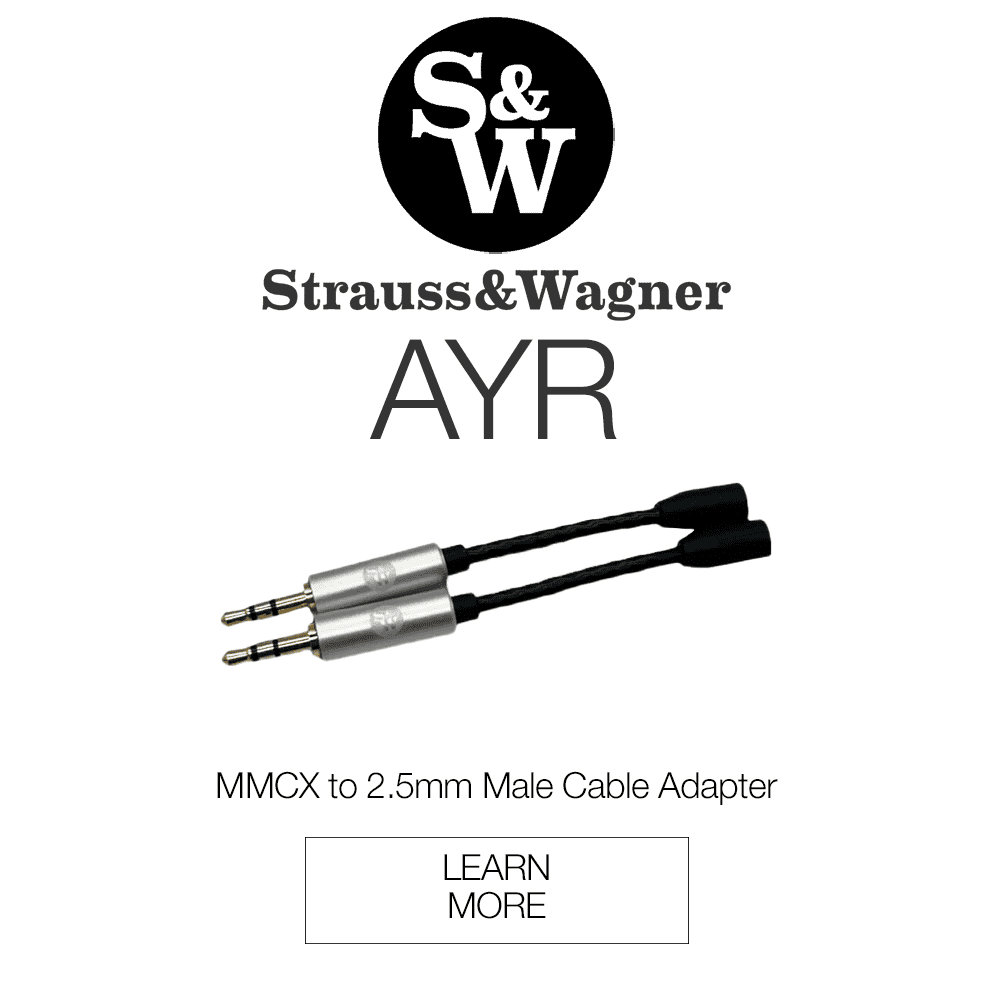Kinera Imperial Loki vs. Empire Ears Odin: A Divine Comparison
In my recent video review for the Kinera Imperial Loki, I asserted that Kinera’s new flagship has what it takes to go toe-to-toe with the top IEMs from the Empire Ears catalog. By a stroke of serendipitous chance, I have access to both the Empire Ears Odin and Kinera Loki today. Let’s see if I have to eat my words, or say “I told you so.” As usual, we’ll be peaking inside their boxes, going over their fit, comfort and technical design, and most importantly, comparing what these two premium IEMs sound like.
What’s In Their Boxes?
Kinera Imperial Loki
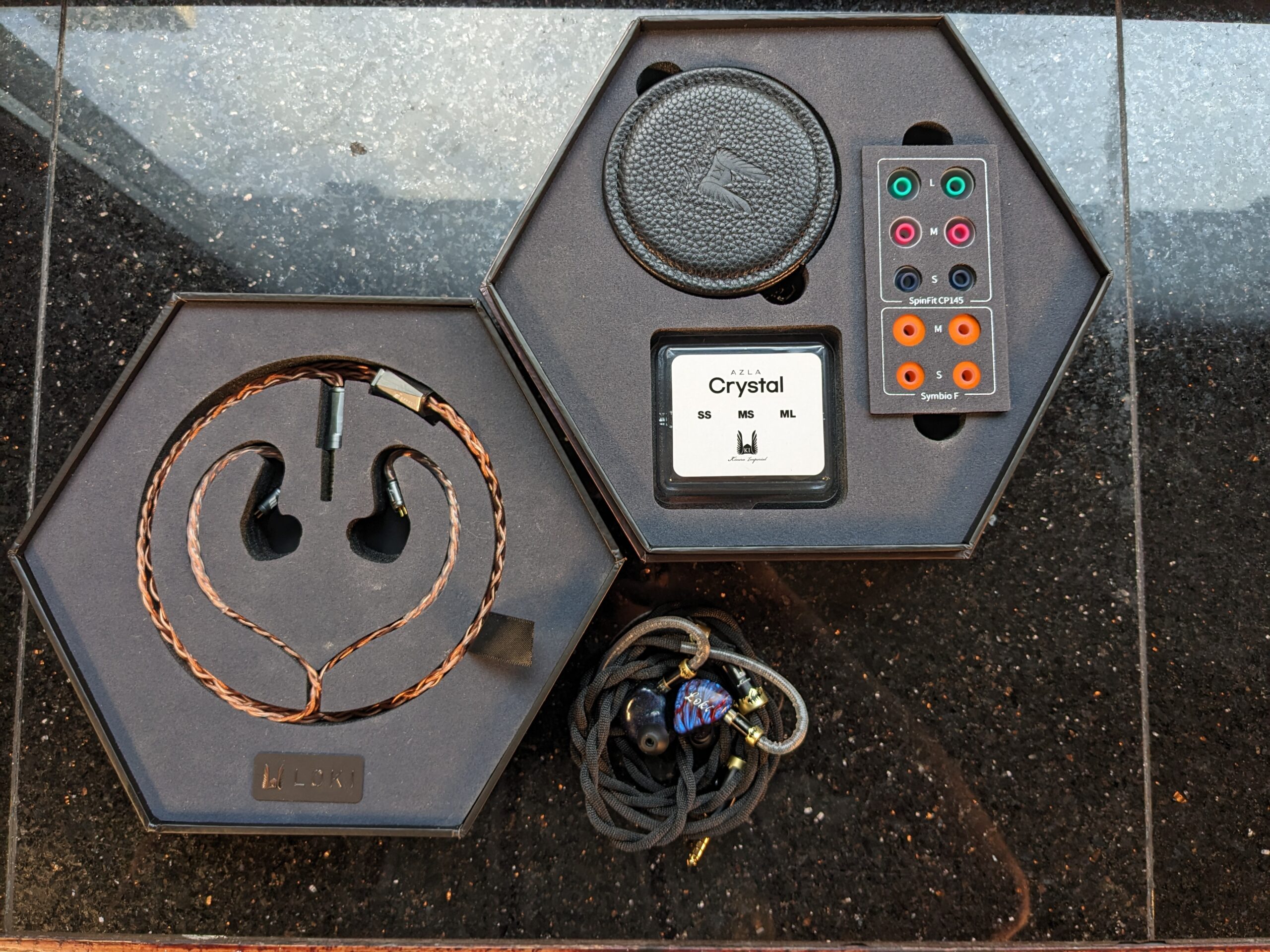
- Kinera Imperial Loki In-ear monitors
- One Effect Audio UP-OCC Cable, EA 4.4mm
- Second IEM Cable with Nylon Insulation 4.4mm
- Final Type E Eartips x 5 sets (SS/S/M/L/LL)
- AZLA SednaEarfit Crystal Eartips x 3 sets (SS/MS/ML)
- Spinfit CP145 Eartips x 3 sets (S/M/L)
- Symbio F Foam Tips x 2sets (S/M)
- Genuine Leather Carry Case
- Cleaning Brush
- User Manual
- Other Literature
Empire Ears Odin
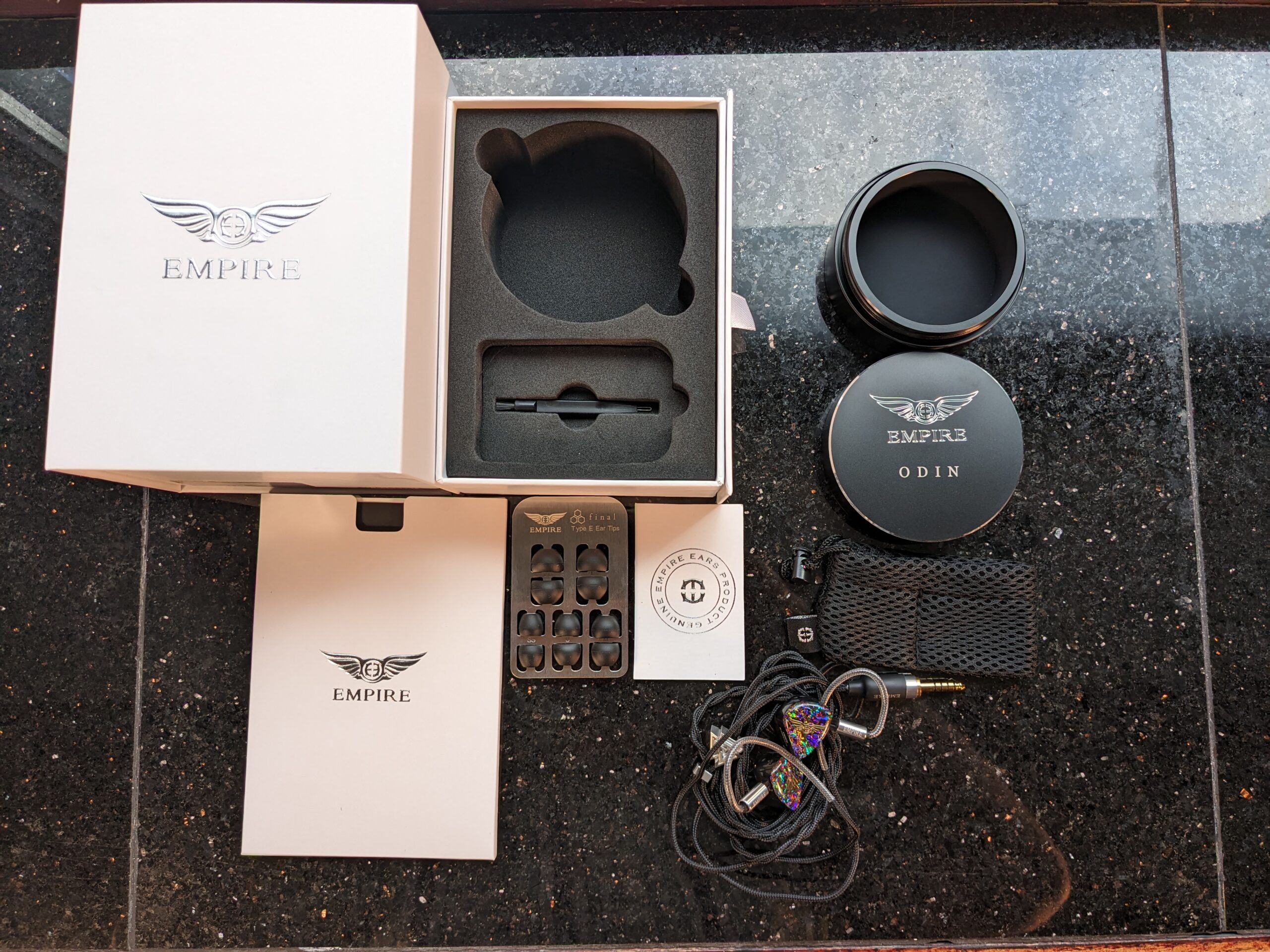
- Empire Ears Odin In Ear Monitors
- Bespoke Stormbreaker UPOCC Copper Litz Cable 4.4m
- Empire Ears Premium Product Card
- 5 Pairs of Final Audio Type E Silicone Tips
- Hard Metal Travelling Case
- Soft Mesh Carrying Pouch
- Literature
Fit, Comfort, Accessories
To what should be to the suprise of no one, both the Kinera Imperial Loki and Empire Ears Odin are chunky in a way that’s typical of IEMs in this price tier. I imagine the designers and engineers had similar lines of thought: “Stuff it with drivers, round out all the edges, pray that it’s not uncomfortable.” Luckily, both IEMs do in fact handle their size well enough. While you won’t find me raving about their unbelieveable comfort, neither are what I would call uncomfortable or fatiguing. I had no issues wearing either for a few hours at a time, and I’m fine leaving it at that.
As for what you get with each, The Kinera Imperial Loki is tough to beat. Empire Ears always impresses me with their classy and high quality accessories, particularly their extra protective metallic carrying cases. The Loki, however, borders on hedonism when we open the box: two premium cable options, and 4 ear tip type options that include some genuinely unique varieties (like the AZLA Crystals and Symbio Type F foams). So, while the Empire Ears Odin is certainly offering enough high quality extras to satisfy most buyers, the Kinera Imperial Loki is looking to completely spoil its future owners with the contents of its box.
Finally, I’ll take a second to say that both the Kinera Imperial Loki and Empire Ears Odin are beautiful, flashy, sparkly IEMs that are visually appealing in distinct yet similar ways. You can take a look at the pictures and be your own judge.
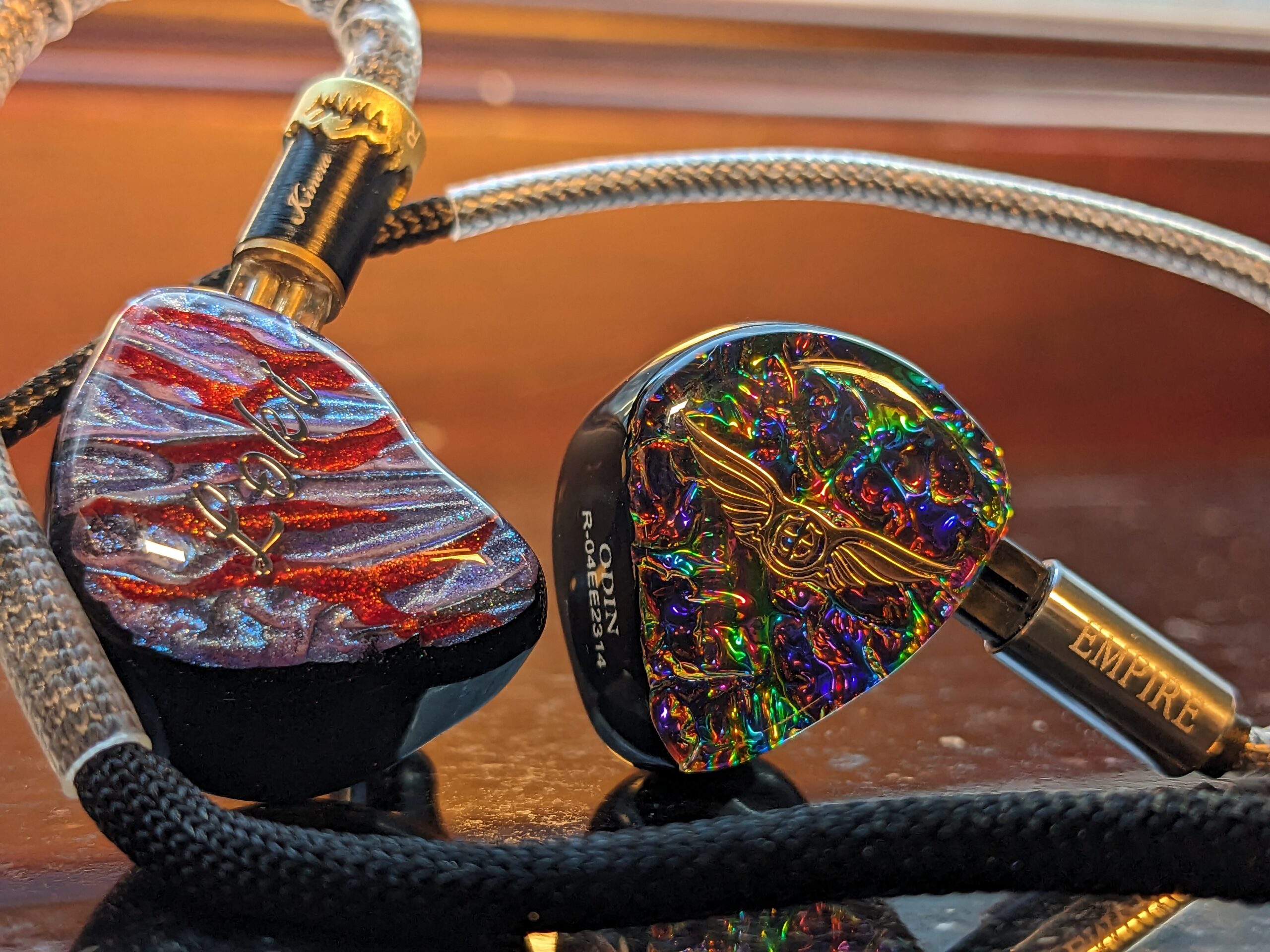
Technical Design
The Kinera Imperial Loki features 12 drivers. Of special note is the inclusion of a bone conduction driver, which transmits soundwaves to a listener’s auditory nerve by bypassing the ear drum and vibrating the ossicles (inner ear bones). In theory, this gives an extra physical quality to low frequency vibrations, and actually expands our hearing range below 20 Hz (and above 20 kHz as well, for that matter).
The Empire Ears Odin sees 11 drivers in its configuration, with the stars of the show being its 2 W9+ subwoofers featured on either side. These drivers feature longer internal coils that enable larger diaphragm movements.
In short, both the the Loki and Odin seem to be putting the ringers of their technical designs into their low end performances.
| Spec | Kinera Imperial Loki | Empire Ears Odin |
| Drivers |
|
|
| Impedance | 12 ohms | 3 ohms |
| Sensitivity | 107 dB | 108 dB |
Soundstages
There are some pretty significant differences in staging and imaging to go over here. The short answer to this part of the review is that the Kinera Imperial Loki has a much wider stage than what I heard on the Odin. This isn’t to say that the Odin has a small stage by any means; this is rather a testament to the Loki’s considerable wingspan. But putting size aside, there’s a quality to the Odin’s forward facing imaging that feels more fluid and holographic than what I heard on the Loki. Again, the Odin seems to have a slightly smaller spatial dimension here, but parts feel as though they originate from a couple of feet away from me and then reach out to brush my face. It’s specifically the Odin’s imaging rather than its staging that, to me at least, lends to its exceptional and genuinely unique spatial character that creates stacks of layers in its depth, width, and height alike. There’s enough size and shape present to create a distinct headspace ambiance, yet there’s an intimacy to it that makes it feel as interactive as it is complexly holographic.

There’s also a lot to be said for the Loki’s imaging, which I called “surgical” in my video review. While the Odin feels like you’re sticking your face into a swirling mass of liquid energy, the Loki has more of what I’ll call a cavernous quality to it. The far corners of its stage that seem to lie and wait in darkness are illuminated by the echos of dense reverbs and airy vocals. Parts also find particularly firm placements in there left-to-right stereo dimension, making even subtle pans pop out with a spatial presence.
For one last catergorization with a little more intution and a less hair-splitting description: the Empire Ears Odin felt like parts were densely (yet articulately) angling in towards me, while the Kinera Loki gave me the feeling that parts were pushing out and away from me.
Balance
Let’s start with what both of these IEMs seem to be putting front and center: big, dominant, and deep low ends. In terms of sheer power, the Empire Ears Odin comes out on top. When listening to orchestral strings, the Odin was quick to bring the subs out of double-basses and press them down the center of my head with a commanding force. You may likely already be aware of the Odin’s reputation in its low end coming into this review, and I can confirm that the stories are true. It’s nothing short of intoxicating, packing a phantom-felt physical sensation of a giant effotlessly pressing down on your head with a massive finger tip. Within its rumbles and vibration, its low frequency energy can become so intense that, at times, it feels like its growling at you. The Odin has been out for about three years now, but still offers one of the most powerful and concentrated low ends you can find in the entire IEM market.
Though not quite as driving and forceful in the low end as the Odin, The Kinera Imperial Loki is still packing in its subs and mid bass, promising to satisfy the greediest of bass heads. What impressed me with the Loki’s low end over the Odin’s, however, was its ruthless dedication to the details of sub and mid bass timbres. No other IEM that I’ve tried has pulled apart the sub-centric album “Halo” by Juana Molina quite like the Loki, which parsed through its constant dueling bass lines and even showcased their wave characters within chaotically thunderous soundscapes. So while there’s a pure hedonistic joy to be had from the Odin’s sub and mid bass profile, there’s a more analytical pleasure found in the depths of the Loki.
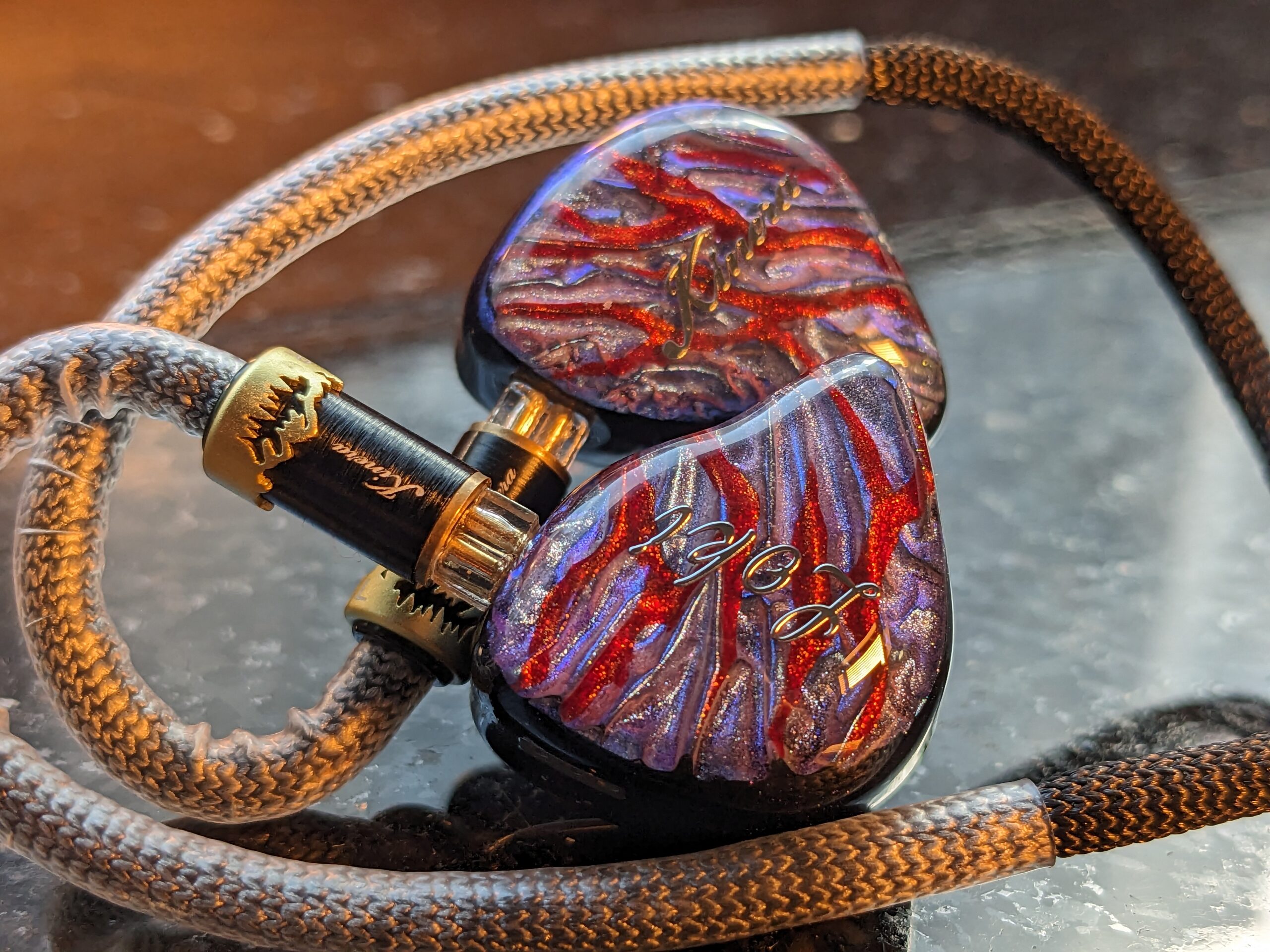
When it comes to center frequencies and treble, the Loki has pretty flat and balanced character – until we hit upper treble, at which point the Loki shoots for the stars. The Loki’s treble-heavy character is unique in this way: it’s high treble amplitudes dont apply to the frequency regions that make vocals shouty, electric guitars harsh, or strings shrill. Instead, it’s breezy and sizzling, servicing the overall balance with extra lift through airy vocals, whispy cymbals, and extra pronunciation on transients. Acoustic guitars, for example, present with a mostly natural quality, but find emphasis in their washboard-like strummy transients.
While the high-treble flourishes in the Kinera Imperial Loki’s lead to a more general, textural affect on its balance, the Odin is placing a significant emphasis on lower and mid treble, as well as its upper mids. This gives it a denser high frequency profile, and effects more specific parts of the balance – electric and acoustic guitars, for example have a more driving and crunchy quality to them than the more mellow sounding Loki. While grand pianos on the Loki had their more percussive and striking qualities brought out of them, they took on a richer and more aggressive harmonic intensity on the Odin.
To sum it up, the both the Loki and the Odin have balances that go hand in hand with their soundstages.
The Odin is dense, intense, driving and pushy; the Loki, more delicate, detailed, spacious and whispy. But don’t let these contrasting adjectives distract from an underlying commonality: the bass responses on both Odin and the Loki will kick your ass, each in their own way.
Overall
I stand by my statement that Kinera’s Imperial Loki has what it takes to go head-to-head with an established top shelf IEM like Empire Ears’ Odin, but the two showcase very different sonic qualities. For ultra premium IEMs like these, I don’t have descisive victor in mind here. I’ll sum things up with this: the Loki and Odin aren’t infringing on eachothers territory, so far as they hold significantly distinct appeals as I’ve outlined above. Some one who has found divine love in the Loki may not be so thrilled with the Odin, and vice verse. And for the psychos thinking about dropping more than $6000 and getting both, I have to say, you’re not at risk of redundancy – I can see them serving as premium bookends in the spectrum of a high end collection.
Purchase or read more about the Kinera Imperial Loki here from Audio46.
Purchase or read more about the Empire Ears Odin here from Audio46.
Compare the ranking of various headphones, earbuds and in-ear monitors using our tools.
Discuss this, and much more, over on our forum.
---MAJORHIFI may receive commissions from retail offers.






